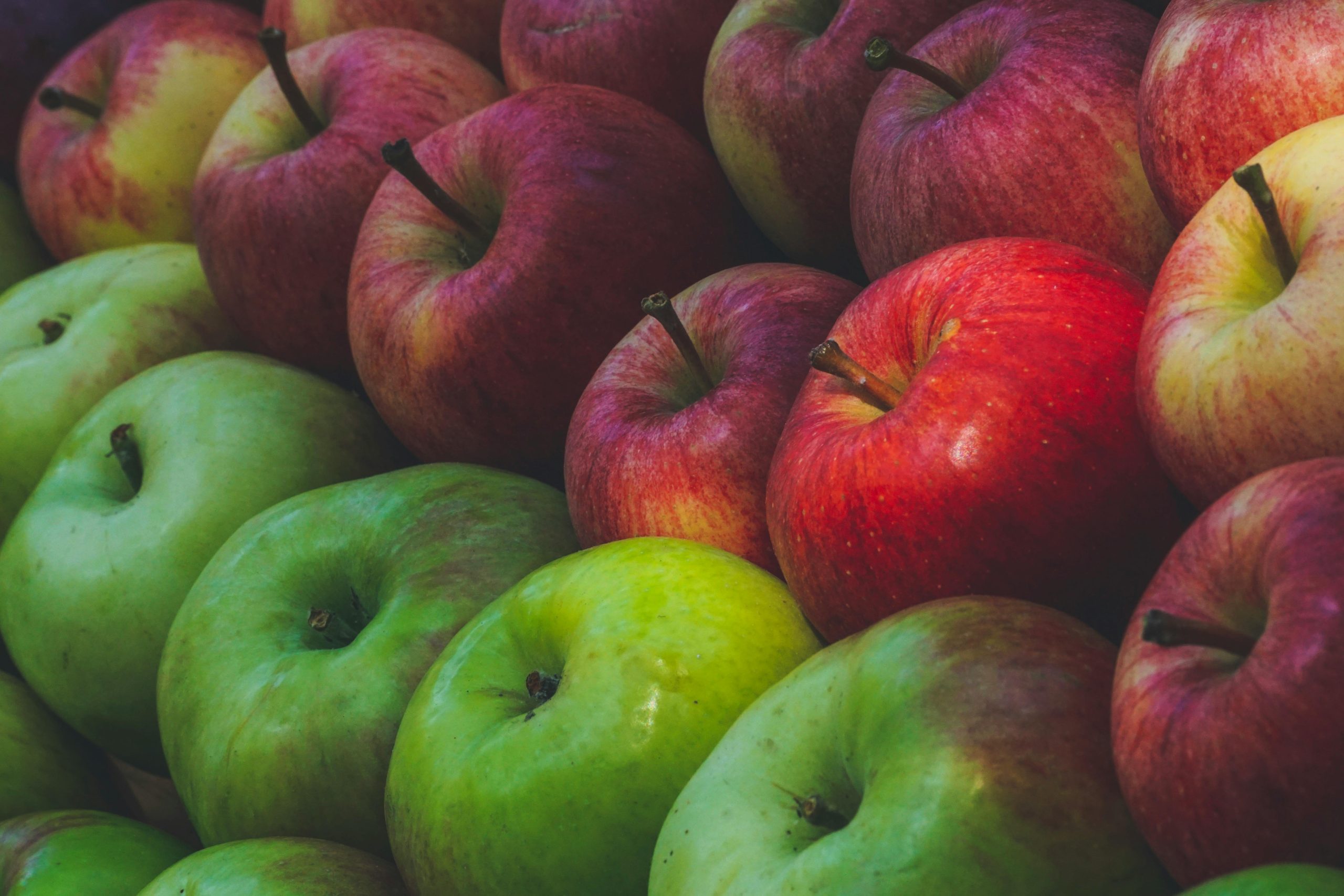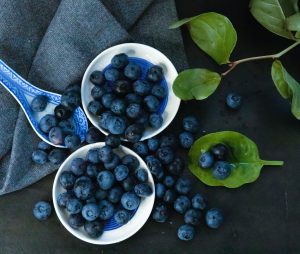
What Is an Apple?
The apple fruit, scientifically known as Malus domestica, is a round or oval-shaped fruit produced by the apple tree. Belonging to the Rosaceae family, apples are characterized by smooth or slightly textured skin, with colors ranging from red and green to yellow. This nutritious fruit is a rich source of dietary fiber, particularly pectin, contributing to digestive health. Apples contain essential vitamins and minerals, including vitamin C and potassium, while being relatively low in calories.
With a sweet or sweet-tart flavor, apples are enjoyed fresh as snacks, added to salads, and used in diverse culinary creations like pies and juices. Cultivated in orchards worldwide, apple trees bloom in spring, yielding a harvest in late summer or fall.
Beyond their culinary versatility, apples hold symbolic significance in various cultures and traditions.
Why Do We Eat Apples?
People eat apples for various reasons, including their appealing taste, nutritional benefits, and versatility in culinary applications. Here are several reasons why apples are commonly consumed:
- Nutritional Value:
- Apples are a nutritious fruit, containing dietary fiber, vitamins (such as vitamin C), minerals (including potassium), and antioxidants. They contribute to a balanced and healthy diet.
- Dietary Fiber:
- Apples are an excellent source of dietary fiber, particularly pectin. Fiber supports digestive health, helps maintain regular bowel movements, and may contribute to weight management.
- Low in Calories:
- Apples are relatively low in calories, making them a healthy and satisfying snack option for those looking to manage their calorie intake.
- Hydration:
- With a high water content, apples contribute to hydration, helping maintain fluid balance in the body.
- Convenience: Apples are portable, easy to carry, and require no preparation, making them a convenient and accessible snack on the go.
- Versatility:
- Apples can be enjoyed in various forms, such as fresh, sliced, or chopped in salads, as a topping for cereals or yogurt, and as an ingredient in both sweet and savory dishes.
- Natural Sweetness:
- The natural sugars in apples provide a sweet taste without the need for added sugars, making them a healthier alternative to sugary snacks and desserts.
- Culinary Uses:
- Apples are used in a wide range of culinary applications, from desserts like pies, crisps, and cobblers to beverages like apple juice and cider.
- Health Benefits:
- Regular consumption of apples has been associated with various health benefits, including potential reductions in the risk of certain chronic diseases due to the presence of antioxidants.
- Symbolic and Cultural Significance:
- Apples hold symbolic significance in various cultures, often associated with health, knowledge, and tradition. They are commonly exchanged as gifts during holidays.
In summary, people eat apples not only for their delicious taste but also for their nutritional richness, convenience, and versatility in culinary applications. The combination of health benefits and culinary adaptability makes apples a popular and widely enjoyed fruit worldwide.
When Do We Eat Apples?
Apples can be enjoyed at various times throughout the day and incorporated into different meals and snacks. Here are common times when people eat apples:
- As a Snack:
- Apples make for a convenient and healthy snack. They are portable, require no preparation, and can be easily carried for on-the-go consumption.
- In Breakfast:
- Sliced apples or apple chunks can be added to breakfast items like cereal, oatmeal, yogurt, or eaten on their own as part of a balanced breakfast.
- In Salads:
- Apples, when sliced or diced, can add a sweet and crunchy element to salads. They pair well with greens, nuts, and cheeses.
- With Nut Butter:
- Apples are often paired with nut butter, such as peanut butter or almond butter, for a satisfying and nutritious snack.
- In Smoothies:
- Apples can be blended into smoothies, providing natural sweetness and a refreshing flavor. They complement other fruits, vegetables, and liquids in smoothie recipes.
- In Baking:
- Apples are a key ingredient in various baked goods, including pies, crisps, muffins, and cakes. Baked apple dishes are often enjoyed as desserts or treats.
- In Lunches:
- Sliced apples can be included in lunchboxes or enjoyed as a side dish with sandwiches or wraps. Their natural sweetness contrasts well with savory flavors.
- With Cheese:
- Apples pair well with various cheeses, offering a combination of sweet and savory flavors. This combination is often served as an appetizer or snack.
- In Desserts:
- Apples are featured in a wide range of desserts, from traditional pies to more modern creations like apple crumbles, tarts, and cakes.
- As a Palette Cleanser:
- Apples, with their crisp texture and mildly sweet flavor, can serve as a refreshing palate cleanser between courses during a meal.
- During Holidays:
- Apples are often associated with holidays, and dishes like apple pie are popular during festive occasions.
Ultimately, apples are versatile and can be enjoyed at any time of the day. Whether consumed fresh, sliced, diced, or incorporated into various dishes, apples provide a combination of natural sweetness and nutritional benefits.
Ingredients of Apples
Apples are a naturally occurring fruit and don’t have a long list of ingredients like processed foods. However, they do contain various components that contribute to their taste, texture, and nutritional profile. Here are the key components found in apples:
- Water:
- Apples have a high water content, contributing to their juiciness and hydration.
- Carbohydrates:
- The primary carbohydrate in apples is naturally occurring sugars, mainly fructose.
- Dietary Fiber:
- Apples are an excellent source of dietary fiber, including soluble fiber called pectin. Fiber is essential for digestive health.
- Vitamins:
- Vitamin C:
- Apples contain vitamin C, an antioxidant that supports the immune system and skin health.
- B Vitamins:
- While present in smaller amounts, apples contain various B vitamins, including B1 (thiamine), B2 (riboflavin), B3 (niacin), B5 (pantothenic acid), B6 (pyridoxine), and folate.
- Vitamin C:
- Minerals:
- Potassium:
- Apples provide potassium, an essential mineral involved in fluid balance, nerve function, and muscle contractions.
- Other Minerals:
- Apples contain small amounts of minerals such as calcium, phosphorus, magnesium, and trace amounts of others.
- Potassium:
- Antioxidants:
- Apples contain various antioxidants, including flavonoids and polyphenols. These compounds contribute to the potential health benefits of apples by neutralizing free radicals.
- Natural Sugars:
- Apples contain natural sugars, mainly fructose. The combination of sugars with fiber contributes to a slow release of energy.
- Malic Acid:
- This organic acid gives apples their tart flavor and is also involved in various physiological processes.
- Phytonutrients:
- These bioactive compounds contribute to the overall health benefits of apples. They include quercetin, catechin, and other polyphenols.
- Flavor Compounds:
- Apples contain a combination of natural compounds that contribute to their distinct flavor, aroma, and overall sensory experience.
It’s important to note that the specific nutritional composition can vary slightly depending on the variety of apple. Additionally, many of the health benefits associated with apples come from the synergistic interaction of these various components rather than individual compounds. Eating apples in their whole, fresh form provides the most nutritional benefits.
Types of Apples
There are numerous varieties of apples, each with its own unique flavor, texture, and best uses. Here are some common types of apples:
- Red Delicious:
- Recognizable for their bright red skin and elongated shape.
- Often sweet, mildly juicy, and crisp.
- Best for fresh eating.
- Golden Delicious:
- Characterized by their yellow-green skin.
- Sweet and mellow flavor, with a crisp texture.
- Suitable for eating fresh, baking, and applesauce.
- Granny Smith:
- Distinctive for their bright green skin.
- Tart flavor and firm texture.
- Ideal for baking, salads, and snacking.
- Fuji:
- Reddish or yellow-green with a hint of pink.
- Sweet, crisp, and juicy.
- Good for eating fresh, salads, and desserts.
- Gala:
- Usually orange-red with yellow stripes.
- Sweet and aromatic with a crisp texture.
- Suitable for eating fresh and salads.
- Honeycrisp:
- Red and yellow skin with a crisp texture.
- Sweet and juicy, known for its honey-like flavor.
- Excellent for fresh eating.
- Pink Lady (Cripps Pink):
- Pink or light red skin.
- Sweet-tart flavor with a crisp texture.
- Good for eating fresh and in salads.
- Cortland:
- Bright red with green undertones.
- Tender, crisp, and mildly sweet.
- Suitable for eating fresh, salads, and cooking.
- Braeburn:
- Reddish-orange with a yellow background.
- Sweet and slightly tart with a firm texture.
- Good for fresh eating and baking.
- Macintosh:
- Red or greenish-red skin.
- Juicy and tender with a slightly tart flavor.
- Best for fresh eating and applesauce.
- Jonagold:
- Yellow with red blush.
- Sweet and tangy with a firm texture.
- Ideal for fresh eating, salads, and baking.
- Empire:
- Red skin with a sweet and tart flavor.
- Crisp and juicy.
- Suitable for fresh eating and salads.
- Ambrosia:
- Pink and yellow skin with a sweet and honey-like flavor.
- Tender and juicy.
- Ideal for fresh eating and salads.
These are just a few examples, and there are many more apple varieties, often with regional popularity. The choice of apple depends on personal preferences and the intended culinary use, whether for fresh eating, baking, cooking, or other applications.
Signs of Ripe, Signs of Raw and Signs of Rotten Apples
Signs of Ripe Apples:
- Color:
- Ripe apples typically have vibrant and consistent coloring based on their variety. Look for apples with their characteristic color fully developed (e.g., red, green, yellow).
- Firmness:
- Ripe apples should feel firm to the touch without being excessively hard. Gently press near the stem or bottom to check for a slight give without being mushy.
- Aroma:
- Ripe apples often have a sweet, fruity aroma at the stem end. While not all apple varieties have a strong scent, a pleasant apple fragrance can indicate ripeness.
- Skin Texture:
- Ripe apples should have smooth and unblemished skin. However, some apple varieties naturally have a slightly rough texture.
Signs of Raw (Fresh) Apples:
- Clean Appearance:
- Fresh apples should have a clean, shiny appearance. Avoid apples with bruises, cuts, or other signs of damage.
- Crisp Texture:
- When you bite into a fresh apple, it should have a crisp texture. The flesh should be juicy and firm.
- Juiciness:
- Ripe, fresh apples should release juice when bitten or cut. However, this may vary among different apple varieties.
- Sweetness:
- Apples intended for fresh consumption should taste sweet or have a balanced sweet-tart flavor, depending on the variety.
Signs of Rotten Apples:
- Discoloration:
- Rotten apples may exhibit changes in color, including dark or soft spots, mold growth, or an overall dull appearance. Discolored patches may appear brown, black, or even white.
- Soft or Mushy Feel:
- Rotten apples will feel soft or mushy when gently pressed. This is a clear sign of overripeness or spoilage.
- Wrinkled or Shriveled Skin:
- The skin of a rotten apple may appear wrinkled or shriveled, indicating dehydration and loss of freshness.
- Foul Odor:
- Rotten apples emit a strong, unpleasant odor. If you notice a foul smell when you approach the apples, they may be spoiled.
- Mold:
- Visible mold growth on the surface of the apple is a clear sign of spoilage. Discard apples with any signs of mold.
- Oozing Liquid:
- Rotten apples may release excess liquid, which can be a result of internal decay or fermentation.
Always inspect apples before consumption, and promptly discard any that show signs of spoilage. Proper storage in a cool, dry place can help extend the freshness of apples.
Summary
Apples are versatile fruits enjoyed for their sweet taste, nutritional benefits, and culinary versatility. Ripe apples display vibrant colors, firmness, a pleasant aroma, and smooth skin.
Fresh apples are characterized by a clean appearance, crisp texture, juiciness, and a sweet or sweet-tart flavor. Signs of overripeness or spoilage include discoloration, softness, wrinkled skin, foul odor, mold, and oozing liquid.
When choosing apples, individuals seek those with appealing qualities for their intended use, whether fresh eating, baking, or cooking. Storing apples properly and inspecting them regularly contribute to maintaining their freshness.
Ultimately, apples are valued not only for their delicious taste but also for their nutritional richness, making them a popular and widely consumed fruit worldwide.






